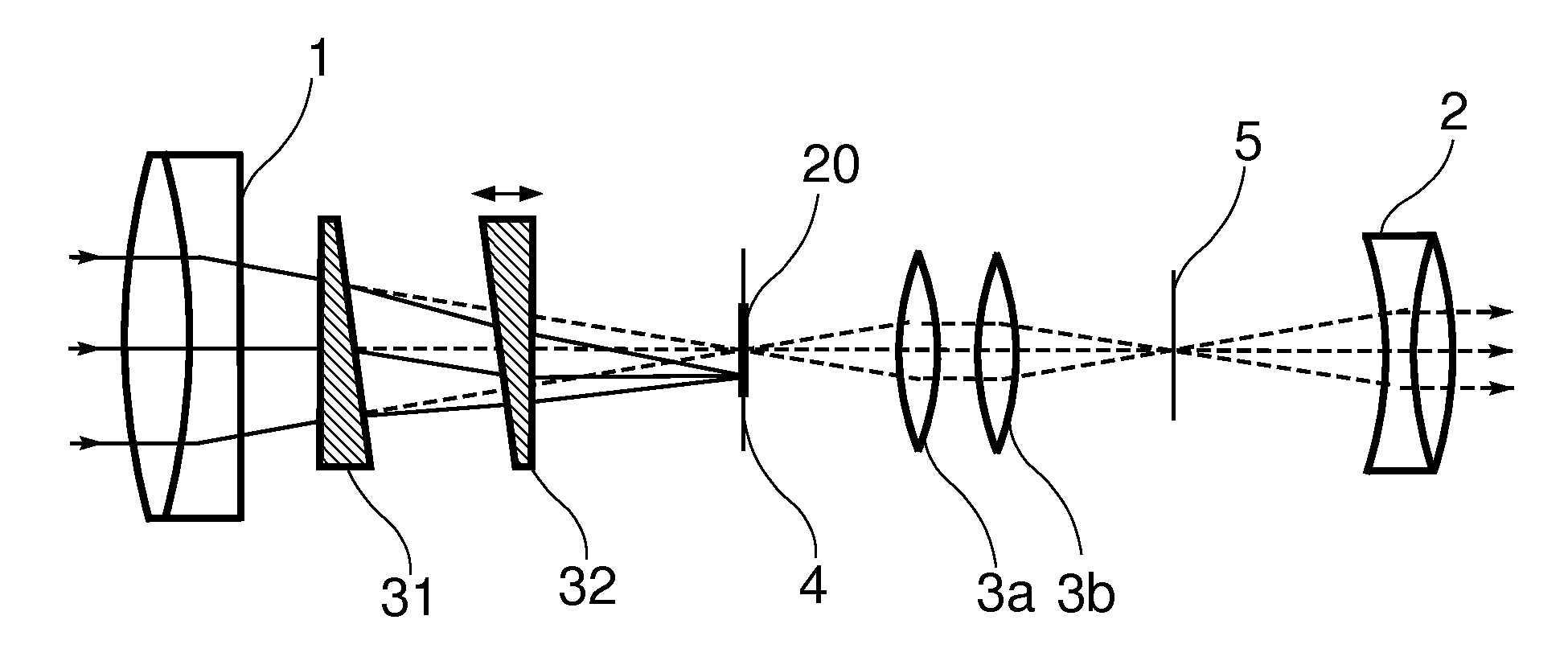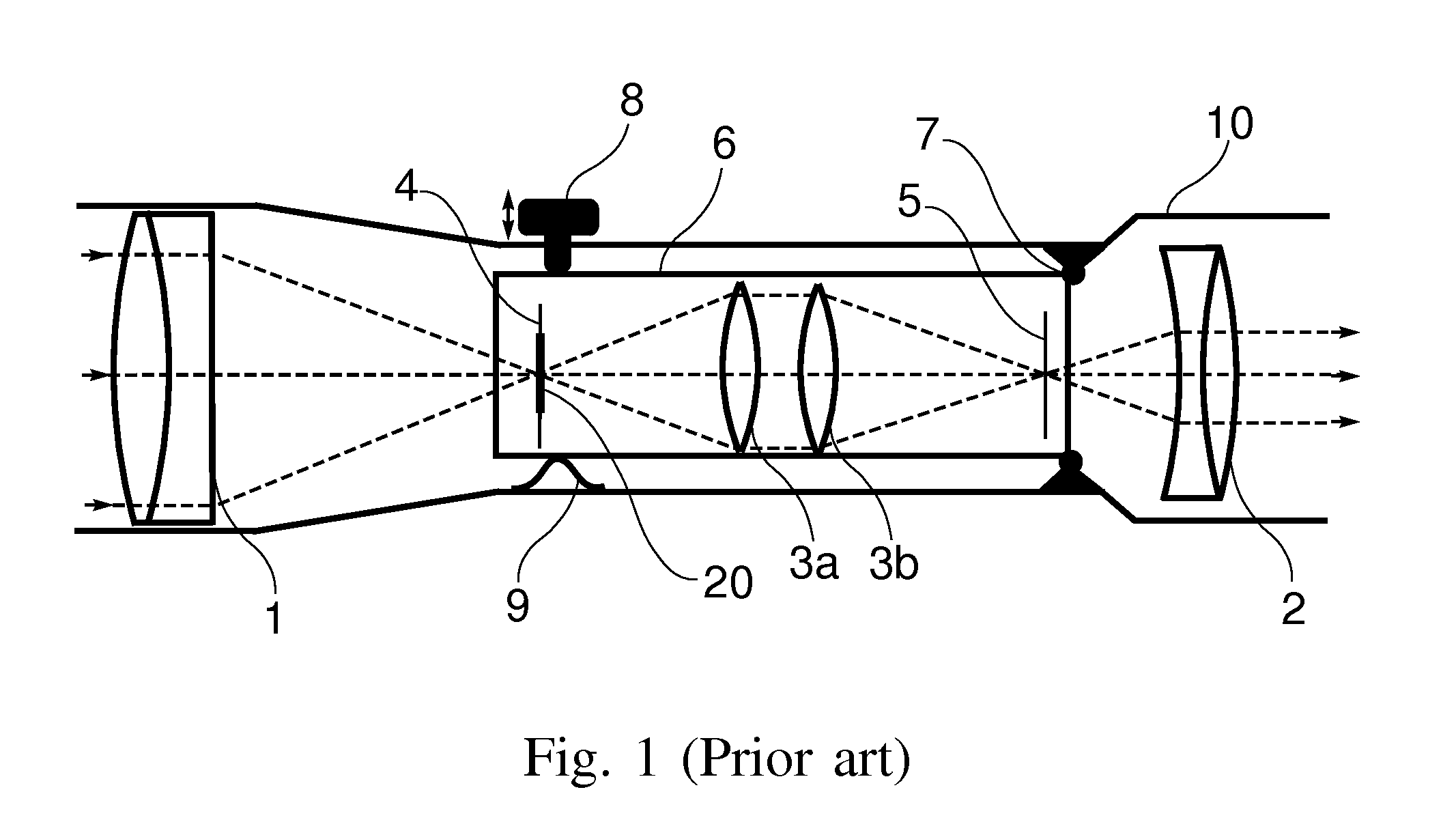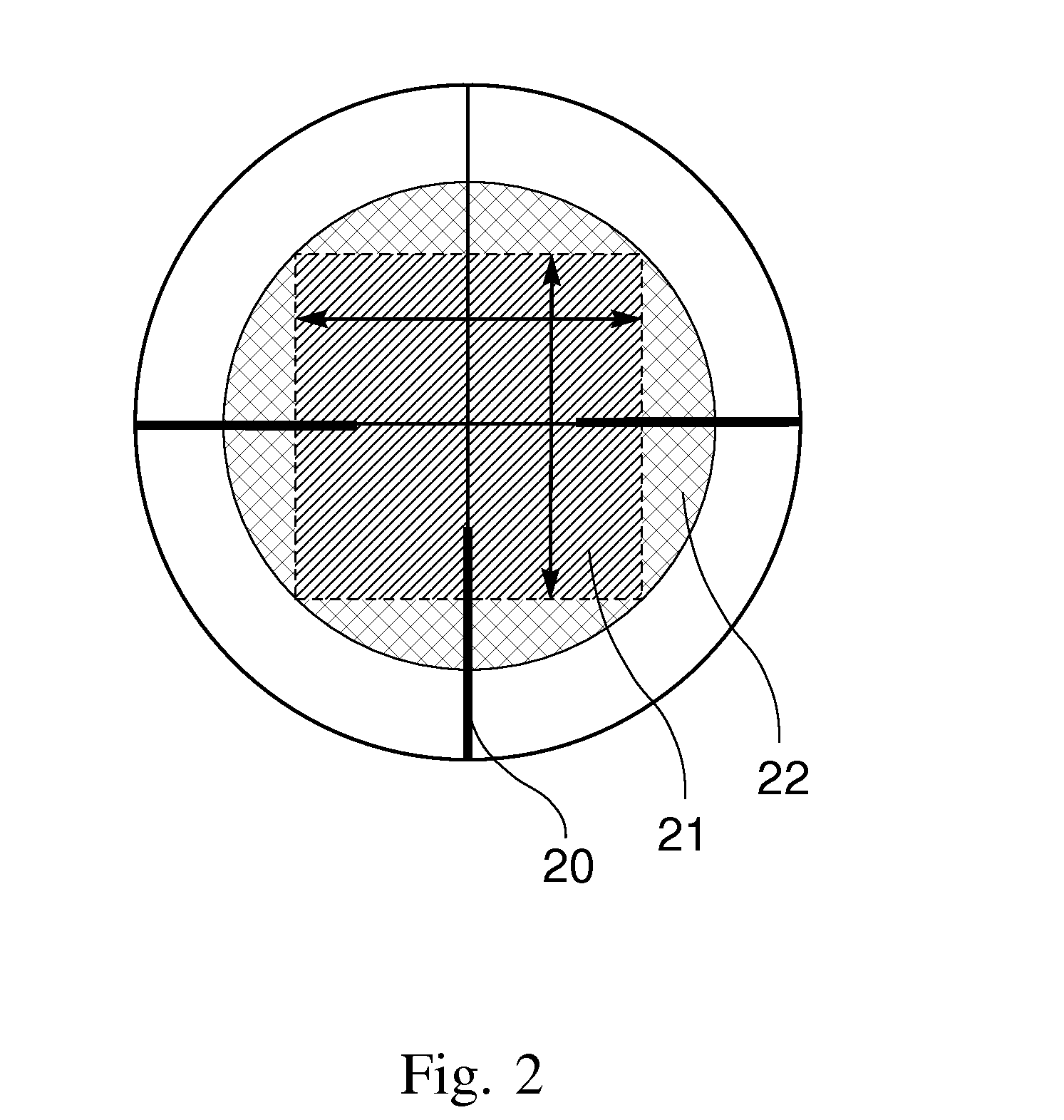Telescopic gun sight with linear optical adjustment mechanism
a linear, optical adjustment technology, applied in the field of optical gun sights, can solve the problems of limited amount of reticle adjustment, limited amount of titling tube mechanism, and inability to use a small diameter inner tube,
- Summary
- Abstract
- Description
- Claims
- Application Information
AI Technical Summary
Benefits of technology
Problems solved by technology
Method used
Image
Examples
first embodiment
A. First Embodiment of the Invention
[0028]A first embodiment of the invention is shown in FIG. 4. In this embodiment a telescopic sight includes an objective lens 1 which forms a first image of the target on the objective focal plane 4. A reticle 20 is placed at the objective focal plane. The first image produced by the objective lens is upside down and laterally reversed. A pair of convex lenses 3a and 3b relay this first image to the eyepiece focal plane 5 and form a second, upright and laterally correct image there. The eyepiece 2 takes this second image and produces a virtual magnified image for the shooter to see.
[0029]Two thin prisms 31 and 32 are placed after the objective lens 1 and before objective focal plane 4. One of these prisms is mounted upside down such that its base faces the apex of the other prism. Furthermore, the prisms are mounted such that at least one prism can move along the optical axis of the objective. (In FIG. 4, prism 32 is designated as the movable pri...
second embodiment
B. Second Embodiment of the Invention
[0032]A second embodiment of the invention is shown in FIG. 5. In this embodiment the pair of prisms 31 and 32 are placed after the objective focal plane 4 and before the erecting lenses 3a and 3b. The reticle 20 is placed at the eyepiece focal plane 5. Other than these changes, the arrangement of elements is similar to the first embodiment.
[0033]To adjust the point of aim, one of the prisms 31 and 32 is moved forward or backward along the optical axis of the sight. This will cause the real image produced by the relay lenses 3a and 3b to shift upward and downward on the eyepiece focal plane 5. Since the reticle 20 is mounted coplanar with the eyepiece focal plane 5, the target image shifts on the reticle and an adjustment for point of aim is provided.
third embodiment
C. Third Embodiment of the Invention
[0034]A third embodiment of the invention is shown in FIG. 6. The arrangement of elements in this embodiment is similar to the second embodiment above except that the pair of prisms 31 and 32 are placed after the erecting lenses 3a and 3b and before the eyepiece focal plane 5. The reticle 20 is placed at the eyepiece focal plane 5.
[0035]The operation of this embodiment is similar to the second embodiment: To adjust the point of aim, one of the prisms 31 and 32 is moved forward or backward along the optical axis of the sight. This will cause the real image produced by the relay lenses 3a and 3b to shift upward and downward on the eyepiece focal plane 5. Since the reticle 20 is mounted coplanar with the eyepiece focal plane 5, the target image shifts with respect to the reticle and the sight's point of aim is adjusted.
D. Advantages
[0036]Based on the above descriptions of some embodiments of the invention, a number of advantages of one or more aspect...
PUM
 Login to View More
Login to View More Abstract
Description
Claims
Application Information
 Login to View More
Login to View More - R&D
- Intellectual Property
- Life Sciences
- Materials
- Tech Scout
- Unparalleled Data Quality
- Higher Quality Content
- 60% Fewer Hallucinations
Browse by: Latest US Patents, China's latest patents, Technical Efficacy Thesaurus, Application Domain, Technology Topic, Popular Technical Reports.
© 2025 PatSnap. All rights reserved.Legal|Privacy policy|Modern Slavery Act Transparency Statement|Sitemap|About US| Contact US: help@patsnap.com



